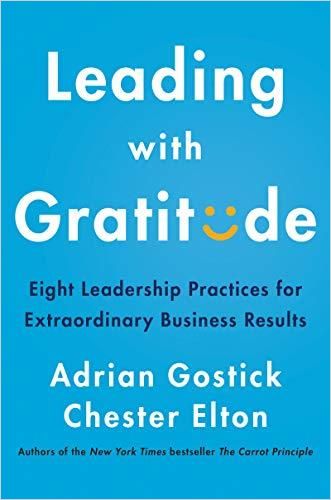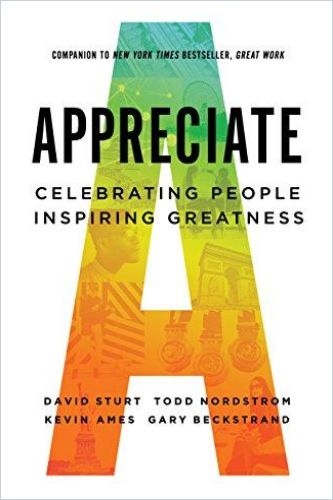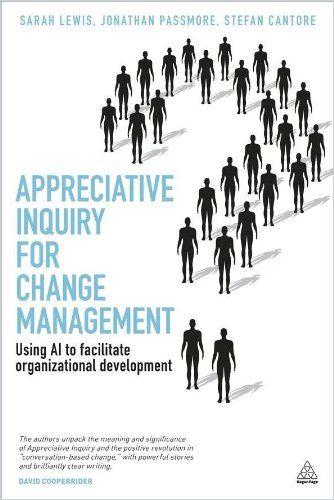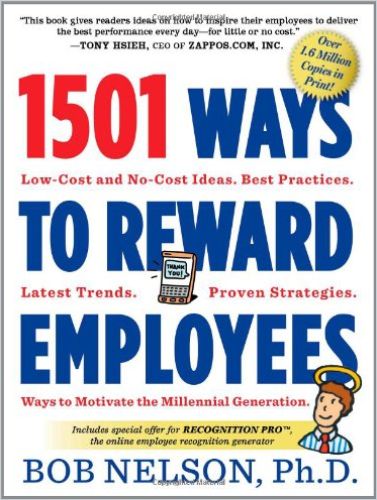Appreciation Is Better than Criticism

On March 3, we celebrate Employee Appreciation Day. Dr. Bob Nelson created it in 1995 to celebrate the publication of his book 1,001 Ways to Reward Employees (here’s the summary of the 2012 reissue) and to remind employers to thank their employees when they do good work. While you shouldn’t limit employee appreciation to only March 3 of every year, it’s a good reminder to celebrate the goals and successes achieved over the last months – and appreciate the hands and minds responsible for them.
Because this action may sound easier than it is for many, we have compiled some brief advice here.
1. What Is Appreciation All about?
Appreciation is beautiful. Everyone probably agrees on this: good feedback, expressed gratitude and favorable mentions are things people like to receive because they make them feel better. Yet a recent survey found that only 18% of Americans feel appreciated at work. This statistic comes as no surprise because praise and focus on the good never really caught on in management. On the contrary: Feedback sessions too often focus on problems, unmet goals, stuck projects and perceived lack of skills or gaps in knowledge. All the victories along the way tend to be forgotten or taken for granted.

Of course, you must name problems if you want to solve them. But how you do that is crucial: If you focus too much on critique, your counterpart will feel that their successes are not being seen. The result is a loss of motivation, rising anger – and a skyrocketing quit rate:
Nearly 80% of workers who left their jobs in recent years cite ‘a lack of appreciation’ as one of their main reasons.
That’s why, in Appreciate, a modern classic on the topic, Todd Nordstrom, Kevin Ames, Gary Beckstrand and David Sturt cite research revealing that leaders must become experts in gratitude by recognizing the tiny details that generate stellar results. They explain that after staff members gain recognition for their efforts, they tend to worry less and focus more on their tasks, making them much more loyal and productive. And they highlight that even employees who expressed appreciation for others experienced a 26% boost in their own engagement indicators, a 33% rise in innovation scores and a 22% increase in measurable results. But that is only a fraction of the effects of appreciation and gratitude in social interaction. Here, here and here you will find further scientific findings on this social phenomenon.

- Recognition inspires loyalty and helps motivate employees to perform innovative, boundary-pushing work.
- Research proves that recognizing workers’ efforts boosts engagement, innovation, results and productivity.
- Appreciated employees feel a sense of opportunity and greater trust, well-being and pride in their work.
- Get the details…
So, when launching a new product successfully, why not positively highlight the manual’s proofreaders instead of just the project managers? Who’s always answering the phone in your organization when no one else does? And what has the intern learned more quickly than many others in your company? Next time you have a conversation, or after your colleague’s next clever word, remember: praise them, try to notice even the little things that are good – like when someone holds the door open for someone else and you see it – and spend more time in feedback conversations highlighting the positive things than criticizing the rest. And if you can’t do without criticism, even that can be positively “framed” by addressing the challenge together, offering help and easing fears.
Learn more about rewarding employees in the following Journal articles:
2. Appreciation Can Change Entire Organizations
On a personal level, praise is good. You’ve always kind of known that, and you’ll be more upbeat and appreciative this year. But what about entire companies?
Because people create and exist in organizations, these collectives suffer the same conflict, chaos and endless complexity as human beings.
Yet, organizations often fail to acknowledge and leverage the human side in their change initiatives, and they struggle mightily as a result. Psychologists Sarah Lewis and Jonathan Passmore and consultant Stefan Cantore offer an overview of a variety of conversation-based change management methods in use today, with a particular focus on “Appreciative Inquiry” (AI) in Appreciative Inquiry for Change Management.

Professor David Cooperrider popularized the idea behind AI back in the 1980s, and he continues to be successful with it today – he just won the getAbstract International Book Award in the Readers’ Choice category:
Basically, AI is about the following fairly simple insights:
- Every individual and group has a potential that needs to be tapped.
- Development is co-determined by attitude: If you focus on things that are not going well on a personal level, sooner or later, the whole organization will be questioned.
- Yet, if you identify previously hidden successes, new ones will follow.
- To do so, focus on what’s working rather than what’s broken.
- This conversational strategy helps your people grow and change.
Following these building blocks can give one-on-one meetings and group sessions the kick they need instead of demotivating your colleagues. But you can use AI for entire companies, not just individual employee reviews. An AI conference includes four main phases and can last up to five days:
- In the exploration phase, participants compile their organization’s success stories in alternating interviews at tables of eight.
- The second phase is designed to generate dreams and visions.
- The third step is about shaping the projection of the future that has been worked out beforehand.
- The last step is dedicated to concrete implementation: working groups are formed, and a follow-up process is set in motion.
- The effect of an AI conference on a powerless organization is always unique.
- Find out more…
It’s time to abandon the fantasy that an entity made up of people can operate like a well-oiled machine. Instead, imagine it with a pulsing heartbeat – the sum of all the individuals who work in and interact with it.
Organizations suffer problems and act on emotion just like the people who form them.
And, of course, change in any part of an enterprise affects the whole: For instance, outsourcing one activity can have ripple effects throughout the corporate system. An enterprise mirrors the behaviors, foibles, assets and defects of the human beings within it.
The number of organizations that use AI as part of their change-management toolkit include the American Society for Quality, BP Castrol Marine, the United Nations and many others. Over several years’ time, quantifiable improvements in all areas reinforced AI’s validity for organizations and firms.
3. It All Starts with You
You will have guessed it: Naysayers, pessimists, complainers and micromanagers take little pleasure in the scientific findings and success stories of appreciation. But the good news is: You can get out of the whining corner and start to motivate and inspire. Managers, in particular, have a lever for motivation here that they use far too rarely. How can you turn things around?
- Read the abstract of this book. Actually, there is nothing new in it, and when former athletes write books about motivation, they usually end up offside – but this one is an exception because it focuses on exactly the one thing that is essential.
- Read the following articles in our Journal:
Finally, ask yourself: What makes you feel good? What keeps you satisfied, loyal to a company, and ready to take on new challenges with and for it? What do you want from your boss?
You name it.












